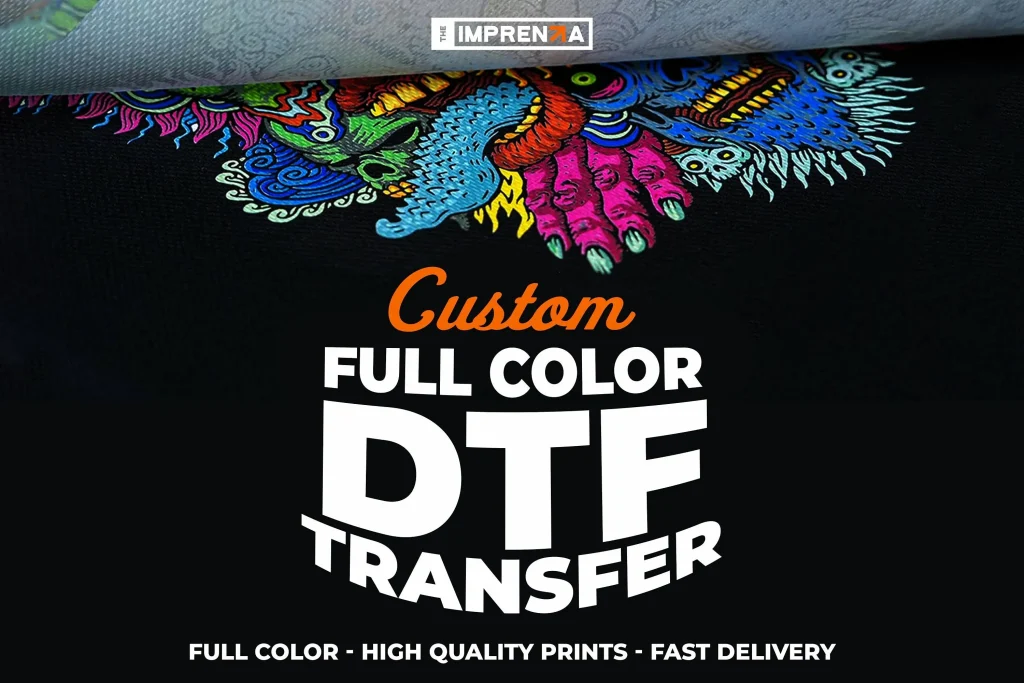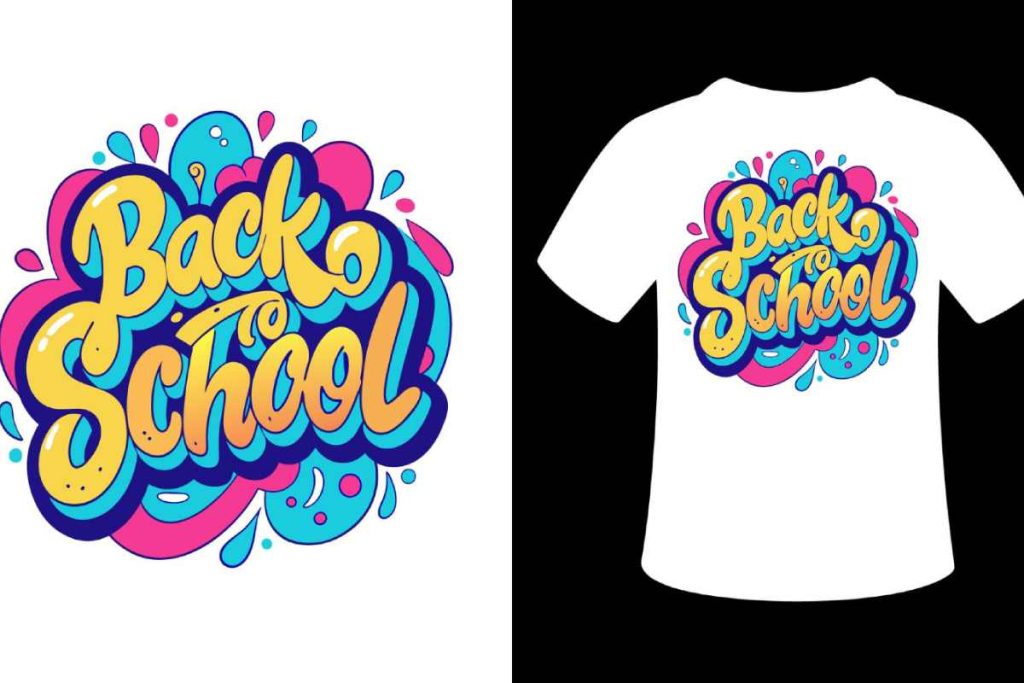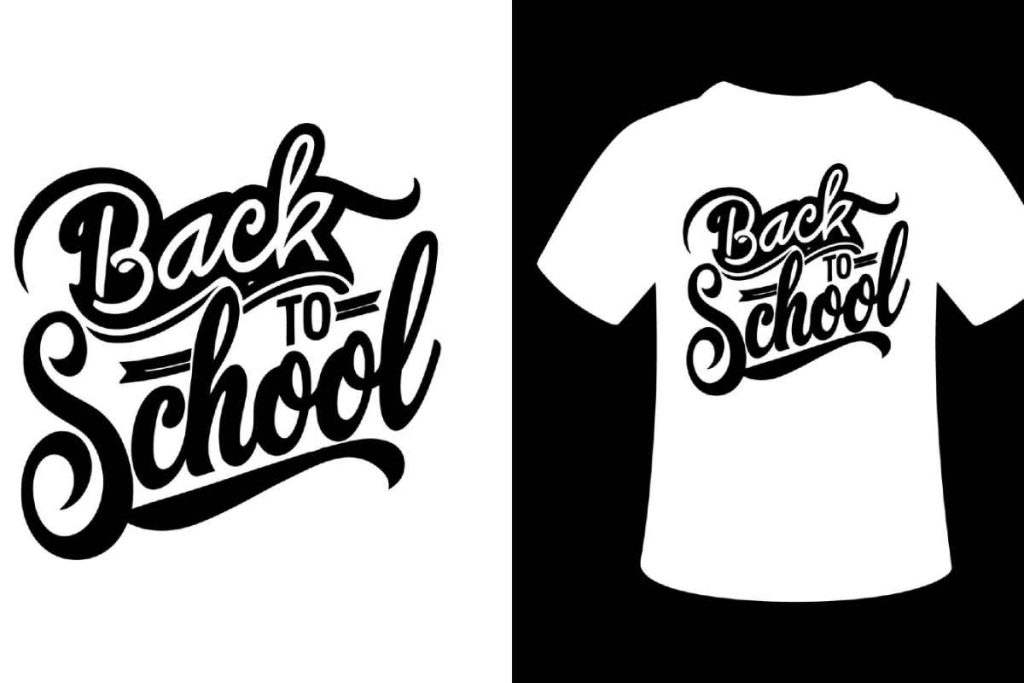DTF transfers, or Direct-to-Film transfers, are revolutionizing the printing industry by providing a versatile and efficient method for producing vibrant, long-lasting prints on a variety of materials. This innovative DTF printing process allows for high-resolution artwork to be transferred with exceptional clarity, ensuring that colors pop and details shine. Unlike traditional methods like screen printing, the DTF transfer technique utilizes specialized films and inks that bond effectively during the DTF heat pressing stage. With the right DTF transfer materials and techniques, you can achieve durable prints that withstand the test of time, making it a popular choice for custom apparel and promotional merchandise. Discover how mastering DTF transfers can elevate your printing projects with stunning results that are sure to impress.
When it comes to the realm of printing, DTF transfers are becoming increasingly essential for creators and businesses alike. Often referred to as Direct-to-Film printing, this process involves a unique technique that ensures your designs are not only vivid but also resilient against wear and fading. Utilizing advanced printing technology with high-quality inks, this method produces durable images that can be applied to various surfaces, from fabrics to hard substrates. Additionally, the DTF printing process facilitates the application of intricate designs with ease, leading to professional-grade results that can enhance the value of your products. In the world of customizable printing, DTF transfers signify a powerful tool that caters to the evolving demands of your creative pursuits.
Understanding the DTF Printing Process
The DTF printing process has revolutionized the way designers and printers approach textile printing. This method begins with a digital design that is carefully prepared to ensure high resolution that captures every detail. As the artwork gets printed onto specialized DTF film, the use of high-quality inks becomes paramount. These inks are not just vibrant; they are also designed to adhere perfectly to the film and transfer effectively to various fabrics, ensuring that the printed designs maintain their integrity.
Once the design is printed, the application of adhesive powder is a critical step, as it enhances the bond between the ink and the fabric during the heat pressing phase. Heat pressing is where the magic happens; by applying the right temperature and pressure, the ink fuses to the textile, creating a durable and visually striking print. This comprehensive DTF printing process ensures that your final product is not only appealing but also built to last.
Key Materials for DTF Transfers
Mastering DTF transfers requires a firm understanding of the materials involved. DTF film is one of the most crucial components, as it is specially designed to hold onto the inks and adhesive powder. The unique coating of the DTF film allows it to absorb the printed inks properly, which is essential for achieving high-quality results. Without the correct type of film, the print quality can suffer, leading to subdued colors and inconsistent application.
In addition to the film, the choice of DTF inks plays a vital role. Typically made from water-based materials, these inks provide not only vibrant color solutions but also long-lasting resistance to fading and cracking. Adhesive powder is another essential element, as it bonds the printed design to the fabric effectively. When combined correctly, these materials enhance the overall quality and durability of the final print, making DTF a preferred choice for many businesses in the custom apparel industry.
Advantages of Using DTF Transfers
DTF transfers offer a multitude of advantages that appeal to both small businesses and large-scale operations alike. One significant benefit is their versatility; DTF can be applied on various fabric types, including cotton, polyester, and even blends. This flexibility allows users to create customized designs suitable for a wide range of applications, from sportswear to company merchandise.
Another notable advantage is the longevity of DTF prints. Unlike traditional methods that may crack or fade over time, DTF prints maintain their visual appeal, staying vibrant and intact even after multiple washes. This durability makes DTF an excellent investment for garments that need to withstand daily wear and tear, ensuring that designs remain sharp and attractive for significantly longer periods than many other printing methods.
Best Practices for Professional DTF Printing
To achieve professional results in DTF printing, adhering to best practices is essential. Firstly, ensuring that the fabric surface is clean and free of any debris or oils is critical for achieving optimal adhesion. A well-prepared surface ensures not only better results but enhances the durability of the print.
Experimentation is also a key aspect of mastering DTF transfers. Different fabrics may behave differently during the heat pressing process, affecting color vibrancy and adhesion levels. Testing various settings on a selection of fabrics can help identify the perfect combination of temperature and pressure that yields the best quality prints.
Emerging Trends in DTF Printing Technology
As the DTF printing industry evolves, several emerging trends are shaping its future. One of the most significant advancements is the introduction of improved printer models that feature enhanced ink management systems, allowing for higher resolution prints and greater efficiency. This streamlined process not only saves time but also elevates the quality of prints, making DTF an increasingly appealing option for printers looking to compete in a dynamic market.
Another trend is the availability of eco-friendly materials. As sustainability becomes paramount in manufacturing, many suppliers are introducing environmentally conscious inks and adhesives without compromising on print quality. These innovations not only appeal to the eco-aware consumer but also help businesses meet new regulations for environmentally friendly practices, positioning them favorably in the marketplace.
Resources for Mastering DTF Printing Techniques
For those looking to enhance their DTF printing skills, a wealth of resources is available. Comprehensive guides dedicated to DTF techniques can provide detailed information on everything from the types of materials needed to advanced printing methods. These guides often contain troubleshooting information that can help beginners avoid common pitfalls, ensuring a smoother and more productive experience.
Engaging with online forums and industry blogs is an excellent way to connect with experienced professionals in the DTF printing community. These platforms allow users to share their experiences, exchange tips, and even explore new techniques that can elevate their printing work. The knowledge shared within these communities can be invaluable, contributing to a deeper understanding of the DTF process and its potential.
Frequently Asked Questions
What is the DTF printing process and how does it work?
The DTF printing process involves printing your design onto a specialized DTF film using high-quality inks. After printing, an adhesive powder is applied to the design, which is then transferred onto the fabric through heat pressing. This method ensures long-lasting prints with excellent color vibrancy.
What materials are essential for successful DTF transfers?
Key materials for successful DTF transfers include DTF films, which hold the ink, DTF inks that offer vibrant colors, and adhesive powders that bond the print to the fabric. These components work together to ensure high-quality and durable prints.
How do I achieve long-lasting prints with DTF transfers?
To achieve long-lasting prints with DTF transfers, it’s crucial to use high-quality DTF materials, maintain proper heat pressing conditions, and ensure thorough ink curing. This helps ensure the prints resist cracking and fading even after multiple washes.
Can DTF transfers be applied to any fabric?
Yes, DTF transfers are versatile and can be applied to a wide range of fabrics, including cotton, polyester, blends, and certain synthetics. This adaptability makes DTF a great choice for diverse printing projects.
What advantages does DTF printing offer over traditional methods?
DTF printing offers numerous advantages over traditional methods like screen printing and DTG, including vibrant color reproduction, durability, and the ability to print on various materials. Additionally, DTF prints maintain their quality through repeated washing, making them ideal for apparel.
What are some common best practices for mastering DTF transfers?
To master DTF transfers, ensure proper surface preparation, experiment with different fabric types, and invest in quality materials. Additionally, pay attention to curing times and heat settings to maximize adhesion and print longevity.
| Key Aspects of DTF Transfers |
|---|
| Definition |
| DTF (Direct-to-Film) transfers are a modern printing technique that uses specialized films to create vibrant and durable prints on various materials. |
| Printing Process |
| 1. Prepare the design digitally. 2. Print the design on DTF film in reverse. 3. Apply adhesive powder on the printed film. 4. Heat press to transfer the design to the fabric. |
| Key Materials |
| – DTF Film: Specialized film for ink retention. – DTF Inks: Water-based inks for vibrant colors. – Adhesive Powder: Bonds the print to fabric. |
| Benefits |
| 1. Versatile application on various fabrics. 2. Durable prints resistant to cracking and fading. 3. Exceptional color reproduction for vivid designs. |
| Recent Trends |
| – Introduction of more efficient printers. – Eco-friendly materials gaining traction. – Increased availability of educational resources for users. |
| Best Practices |
| – Ensure fabric surfaces are clean. – Experiment with settings and fabrics. – Allow proper curing time. – Use high-quality materials for better results. |
Summary
DTF transfers are revolutionizing the printing industry with their ability to deliver vibrant and long-lasting prints across various materials. This advanced technique not only offers enhanced durability and exceptional color accuracy but also caters to a wide range of fabric applications. By mastering the DTF transfer process, including the use of quality materials and best practices, you can achieve stunning results that stand out in the competitive marketplace. With the continuous evolution of technology and eco-friendly options becoming more mainstream, now is an ideal time to delve into DTF transfers for all your printing needs.



